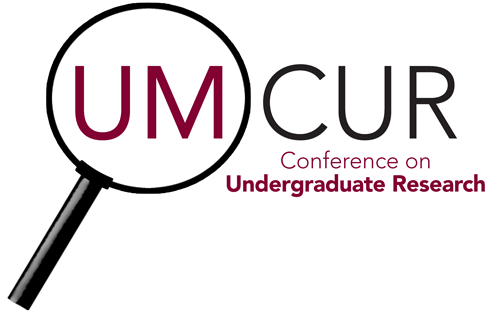
Poster Session #1: UC South Ballroom
Dynamic Assessment of Speech Adaptability in Children
Project Type
Poster
Faculty Mentor’s Full Name
Amy Glaspey
Abstract / Artist's Statement
Speech-language pathologists (SLP) assess and treat issues that affect a person’s ability to communicate, including speech sound development and disorders in children. SLP’s use various assessment tools to measure a child’s current skill level and determine if treatment is needed. One type of assessment is dynamic assessment, which allows a clinician to provide support through demonstrations and instructions. This approach gathers information to determine if a child is able to learn sounds with assistance. Dynamic assessment is commonly used by clinicians, but formal testing measures are limited. Having a consistent methodology could increase reliability of dynamic assessment by reducing testing variability among clinicians. With the interest of knowing a child’s potential throughout treatment, speech adaptability is determined by examining a child’s ability to say sounds when given varying levels of support. This method includes cues and examining speech production in multiple linguistic environments, such as at single word production to complex sentence production. The Glaspey Dynamic Assessment of Phonology (GDAP) is one tool that measures a child’s speech adaptability. Scoring is based on a 15-point hierarchical scale, where the score decreases as the child needs less support. To evaluate the effectiveness of the GDAP, the speech sounds of a three-year, 11-month old boy with severe speech sound disorder were measured during treatment. The following research questions were addressed: Is change observed throughout four weeks of therapy in one three-year, 11-month old boy’s speech production as measured by the GDAP?
Is more improvement observed in one three-year, 11-month old boy’s production of hard sounds or easy sounds over four weeks of therapy as measured by the GDAP? Results indicated that the GDAP showed change in the child’s speech adaptability over four weeks of therapy. The relationship between target difficulty and progress in treatment, along with further clinical implications, will be discussed.
Category
Social Sciences
Dynamic Assessment of Speech Adaptability in Children
Speech-language pathologists (SLP) assess and treat issues that affect a person’s ability to communicate, including speech sound development and disorders in children. SLP’s use various assessment tools to measure a child’s current skill level and determine if treatment is needed. One type of assessment is dynamic assessment, which allows a clinician to provide support through demonstrations and instructions. This approach gathers information to determine if a child is able to learn sounds with assistance. Dynamic assessment is commonly used by clinicians, but formal testing measures are limited. Having a consistent methodology could increase reliability of dynamic assessment by reducing testing variability among clinicians. With the interest of knowing a child’s potential throughout treatment, speech adaptability is determined by examining a child’s ability to say sounds when given varying levels of support. This method includes cues and examining speech production in multiple linguistic environments, such as at single word production to complex sentence production. The Glaspey Dynamic Assessment of Phonology (GDAP) is one tool that measures a child’s speech adaptability. Scoring is based on a 15-point hierarchical scale, where the score decreases as the child needs less support. To evaluate the effectiveness of the GDAP, the speech sounds of a three-year, 11-month old boy with severe speech sound disorder were measured during treatment. The following research questions were addressed: Is change observed throughout four weeks of therapy in one three-year, 11-month old boy’s speech production as measured by the GDAP?
Is more improvement observed in one three-year, 11-month old boy’s production of hard sounds or easy sounds over four weeks of therapy as measured by the GDAP? Results indicated that the GDAP showed change in the child’s speech adaptability over four weeks of therapy. The relationship between target difficulty and progress in treatment, along with further clinical implications, will be discussed.